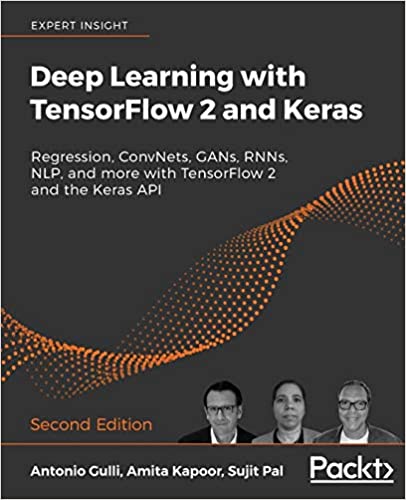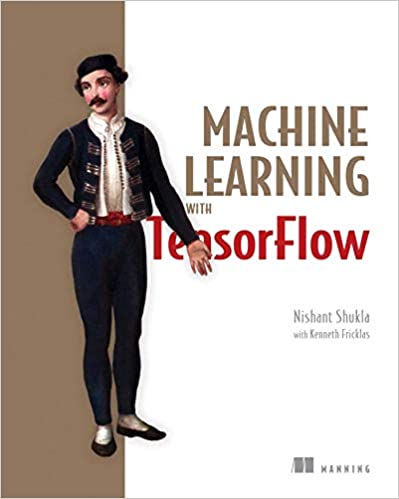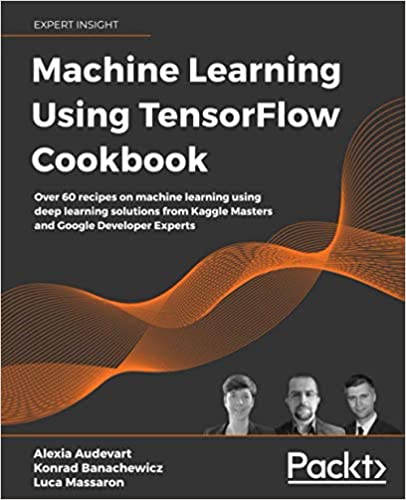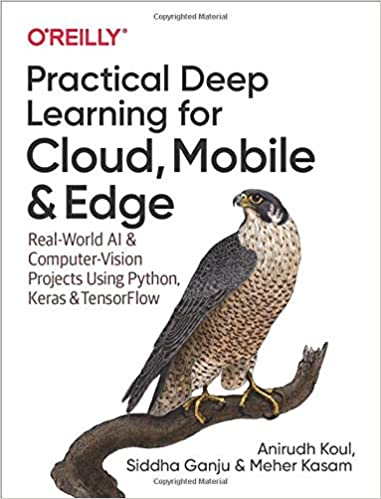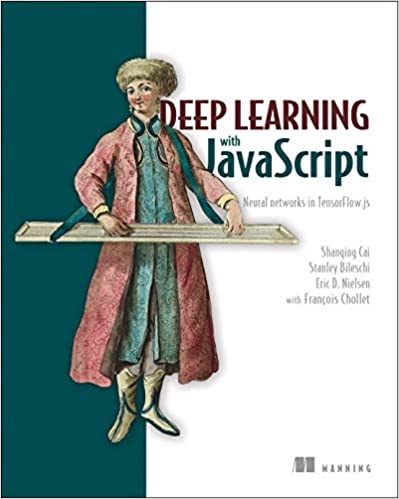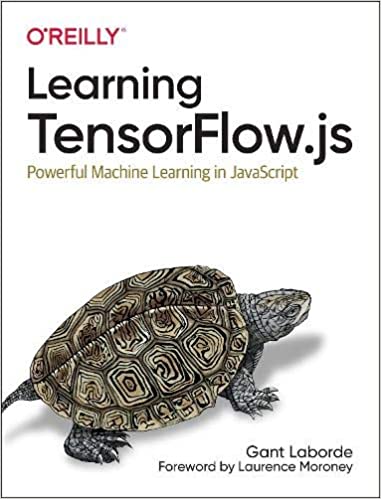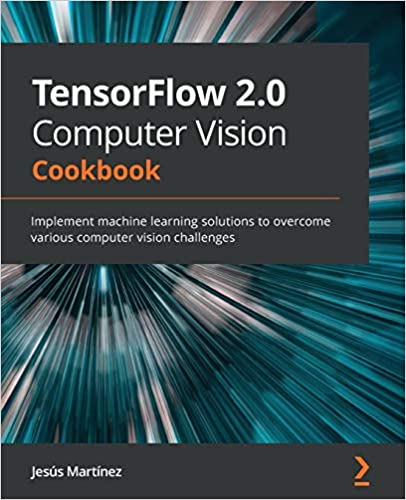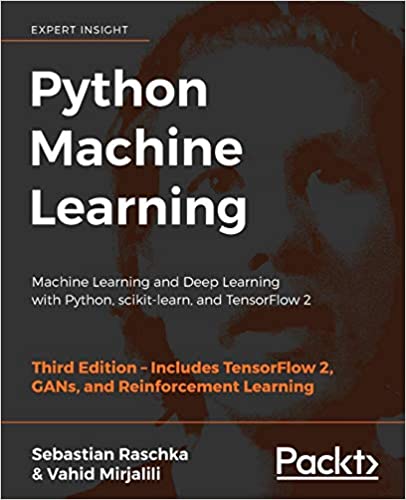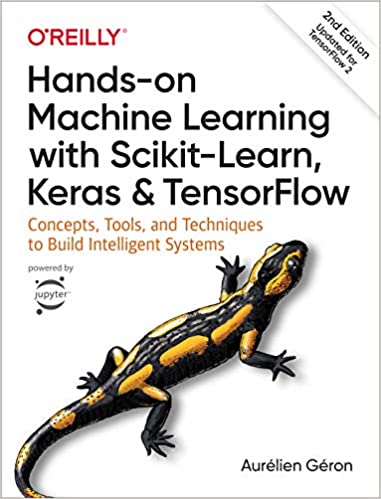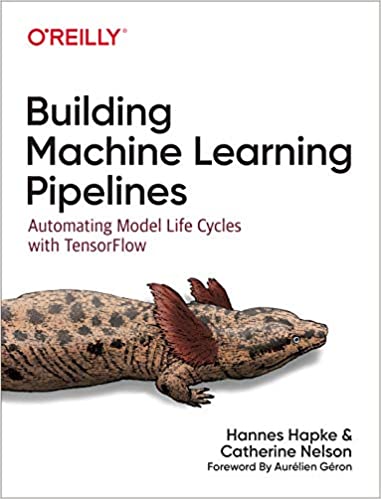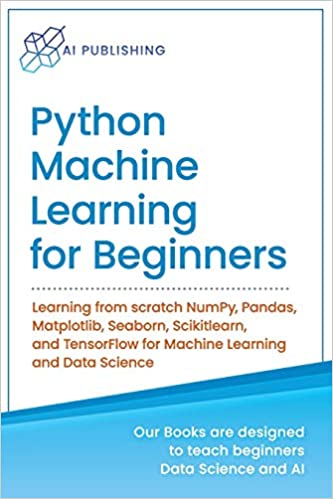Table of Contents
Today we’re looking at the best TensorFlow books for this year.
What is TensorFlow?
🧠 TensorFlow is Google’s free and open-source machine learning library. It’s used for large-scale machine learning.
In addition, it simplifies computations by visualizing them as graphs.
It has plenty of real-world uses such as seeking out new planets.
You’ll find that TensorFlow aides in:
✅ classification
✅ discovering
✅ prediction
✅ creation
And beyond.
So with our list of best TensorFlow books, you can start to learn Tensorflow today.
We’ve also included a couple TensorFlow courses you might be interested in.
This post contains affiliate links. I may receive compensation if you buy something. Read my disclosure for more details.
TLDR: Best TensorFlow Books
🔥 Best Overall 🔥
Deep Learning with TensorFlow 2 and Keras
💥 Best for Newbies 💥
Machine Learning with TensorFlow
💸 Best Value 💸
Machine Learning Using TensorFlow Cookbook
TensorFlow Books
Now you can learn TensorFlow with the best TensorFlow books of all time.
1. Deep Learning with TensorFlow 2 and Keras
🚨 Ideal for: intermediate Python developers
💥 Major topics: regression, recurrent neural networks, natural language processing
Unlike some other similar books, Deep Learning with TensorFlow 2 and Keras introduces TensorFlow and Keras right out of the gate.
This book is for intermediate Python developers.
➡️ Deep Learning with TensorFlow 2 and Keras is one of the best TensorFlow books for learning regression, CNNs, GANs, recurrent neural networks (RNNs) and natural language processing (NLP).
You’ll use TensorFlow and Keras throughout the book while you learn key deep learning and machine learning techniques. You’ll also find extensive code examples.
Next, you’ll examine the most popular approach to machine learning which is regression analysis.
Then you’ll come across some fun challenges while applying deep learning to natural human language and producing responses.
Eventually, you’ll learn how to write deep learning applications in this powerful, scalable machine learning stack.
In addition, you’ll see how TensorFlow 2 provides full integration with Keras.
Finally, you’ll learn how to train your models on the cloud and use TensorFlow in real environments.
See what TensorFlow developers are saying about Deep Learning with TensorFlow 2 and Keras:
If you’re hoping to use TensorFlow 2.0 for deep learning projects, this book is an excellent resource.
– Rafael Espericueta, Customer
2. Machine Learning with TensorFlow
🚨 Ideal for: intermediate Python developers
💥 Major topics: classic prediction, deep learning, recurring neural networks
Machine Learning with TensorFlow by Nishant Shukla will teach you machine learning concepts as well as TensorFlow using Python programming.
It’s similar to Deep Learning with TensorFlow 2 and Keras, but you won’t learn Keras here.
➡️ Machine Learning with TensorFlow is one of the best TensorFlow books for newbies.
You’ll start by learning the basics:
✅ classic prediction
✅ classification
✅ clustering algorithms
And more.
Then you’ll move onto more challenging concepts like the exploration of deep learning. This includes things like looking at recurrent neural networks and reinforcement learning.
In addition to understanding and using neural networks, you’ll learn how to visualize algorithms with TensorBoard.
Before reading Machine Learning with TensorFlow, you should be familiar with Python programming and algebra.
See what TensorFlow developers are saying about Machine Learning with TensorFlow:
Probably the best code clarity I’ve seen in a book.
– nawar R., Customer
🔥 Geena’s Hot Take
There’s an updated version of Machine Learning with TensorFlow. But I (and many others) think that the first edition is the best edition.
There are different authors, different materials covered. The second edition has additional chapters and concepts, but it just doesn’t have the same panache as the first edition.
Just… just trust me and stick with the first edition of Machine Learning with TensorFlow. You’ll get a better understanding of TensorFlow fundamentals.
Keep in mind that they both cover TensorFlow (not TensorFlow 2).
3. Machine Learning Using TensorFlow Cookbook
🚨 Ideal for: intermediate Python developers
💥 Major topics: boosted trees, tabular data, reinforcement learning
Machine Learning using TensorFlow Cookbook was created by Kaggle masters and Google developers.
➡️ Machine Learning using TensorFlow Cookbook is one of the best TensorFlow books for developers on a budget.
You’ll find over 60 recipes for machine learning while using deep learning solutions.
You’ll also master TensorFlow to create machine learning algorithms all while learning about:
✅ Keras
✅ tabular data
✅ transformers
✅ reinforcement learning
And more.
💡 Tabular data is data that’s arranged in rows and columns in a table. They’re used in research, communication and data analysis.
Some of the recipes you’ll work on cover training models, regression analysis and artificial neural networks.
Then you’ll look at real-world implementations of Keras and TensorFlow.
And in the final chapter, you’ll take a project to the production level.
By the end of Machine Learning using TensorFlow Cookbook, you should be proficient in TensorFlow 2.
4. Practical Deep Learning for Cloud, Mobile, and Edge
🚨 Ideal for: intermediate Python developers
💥 Major topics: deploy computer vision models, build scalable applications, develop artificial intelligence
Keras is a deep learning API written in Python that runs on top of TensorFlow.
➡️ Practical Deep Learning for Cloud, Mobile and Edge by Anirudh Koul, Siddha Ganju and Meher Kasam is featured on the official Keras website.
In this step-by-step guide, you’ll learn how to build deep learning applications for:
✅ the cloud
✅ mobile
✅ browsers
Using a hands-on approach, you’ll learn how to build scalable, creative and useful applications.
For example, you’ll learn how to train, tune and deploy computer vision models using TensorFlow, Keras and beyond.
You’ll also learn how to develop artificial intelligence (AI) for devices such as:
✅ Google Coral
With over 40 industry case studies, you’ll work on fun projects such as simulating an autonomous car in a video game environment.
Practical Deep Learning with Cloud, Mobile, and Edge also dispenses over 50 practical tips to maximize debugging and scaling operations.
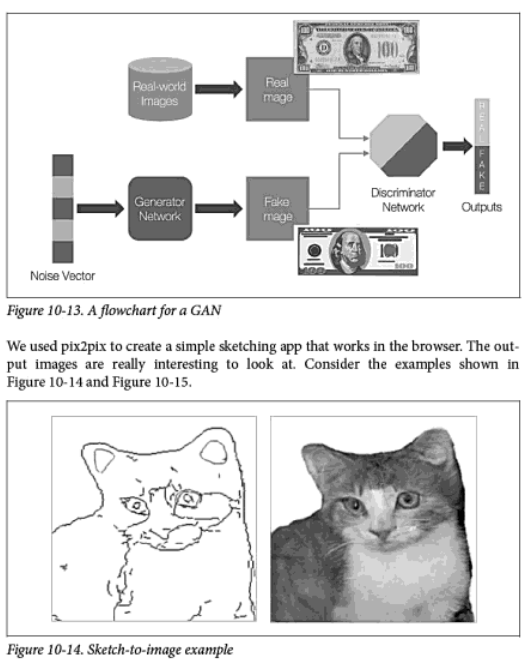
🧠 Want to build an industry-level machine learning project? Sign up for the course Applied Machine Learning: Industry Case Study with TensorFlow on Educative.io.
5. Deep Learning with JavaScript: Neural networks in TensorFlow.js
🚨 Ideal for: intermediate JavaScript developers
💥 Major topics: text analysis, speech processing, image recognition
Because JavaScript is the language of the web, Deep Learning with JavaScript is a good book for developers who want to explore TensorFlow.
It’s written by the main authors of the TensorFlow library.
➡️ Deep Learning with JavaScript is one of the best TensorFlow books for intermediate JavaScript developers.
Instead of using Python or R programming, you’ll use JavaScript to build deep learning apps.
You’ll find plenty of case studies and in-depth instructions for deep learning apps using JavaScript or Node.
And you’ll learn how use TensorFlow to build deep learning models that run directly in the browser.
In this fast-paced book, you’ll learn about:
✅ text analysis
✅ speech processing
✅ image recognition
In addition, you’ll build a self-learning game AI.
After mastering the basics of deep learning, you’ll explore more advanced concepts such as image generation.
You should have a strong foundation in JavaScript before reading Deep Learning with JavaScript.
See what Tensorflow developers are saying about Deep Learning with JavaScript:
Its introduction to deep learning is among the best…
– Full Stack Developer, Customer
6. Learning TensorFlow.js: Powerful Machine Learning in JavaScript
🚨 Ideal for: intermediate JavaScript developers
💥 Major topics: neural network architectures, DataFrames, train machine learning data
Learning TensorFlow.js similar to Deep Learning with JavaScript, but here you’ll focus focus on deep learning and machine learning.
➡️ Learning TensorFlow.js by Gant Laborde is another one of the best TensorFlow books with a strong focus on deep learning using JavaScript.
You’ll start by exploring the most fundamental structures of machine learning: tensors. Then you’ll use real-world examples to convert data into tensors.
This includes going into:
✅ neural network architectures
And learning more about model conversion and transfer learning.
You’ll also learn how to use TensorFlow.js to combine the web with artificial intelligence.
Then you’ll explore resources used to train and manage machine learning data.
By the end of Learning TensorFlow.js, you’ll be able to start building your own training models.
7. TensorFlow 2.0 Computer Vision Cookbook
🚨 Ideal for: intermediate Python developers
💥 Major topics: Keras and dataset APIs, image classification, object detection
TensorFlow 2.0 Computer Vision Cookbook published by Packt is similar to Machine Learning Using TensorFlow Cookbook. But you’ll be working on an entirely different set of problems.
This book is intended to help boost the performance of computer vision models.
💡 Computer vision models take uploaded images or videos and predict pre-learned concepts.
This is done using machine learning techniques and deep learning algorithms using TensorFlow 2.x.
➡️ TensorFlow 2.0 Computer Vision Cookbook is one of the best TensorFlow books for developers who like hands-on learning.
You’ll learn about recipes to overcome challenges while building computer vision models.
In addition, it will help machines gain a human level of understanding to be able to recognize and analyze images and videos.
But first, you’ll learn about the key features of TensorFlow 2.x. This includes Keras and dataset APIs.
Then you’ll learn about common computer vision tasks:
✅ image classification
✅ transfer learning
✅ object detection
And more.
So this might not sound all that interesting, but you’ll actually be doing some pretty cool things like enabling machines to recognize people’s emotions or predict their age based on pictures.

You should have a basic understanding of Python programming and computer vision before reading TensorFlow 2.0 Computer Vision Cookbook.
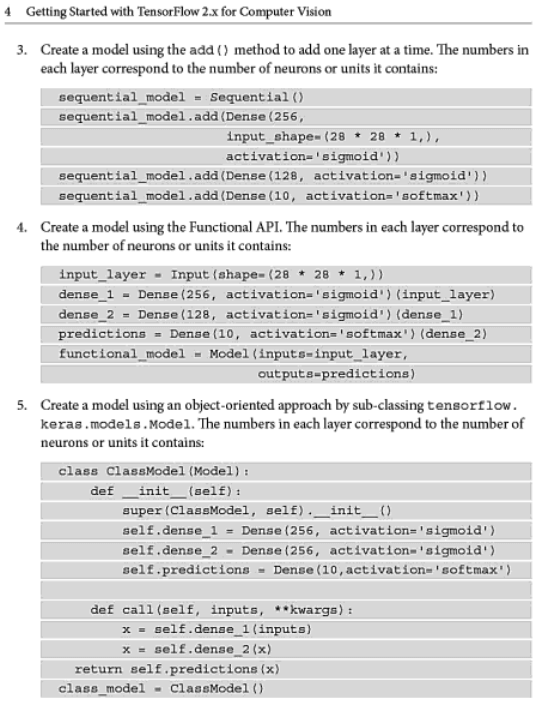
🧠 Complement this book with the course Build Deep Learning Models with TensorFlow on Codecademy Pro.
8. Python Machine Learning, 3rd Edition
🚨 Ideal for: intermediate Python developers
💥 Major topics: TensorFlow 2, GANs, reinforcement learning
Python Machine Learning by Sebastian Raschka and Vahid Mirjalili will teach you machine learning with a heavy focus on theory.
➡️ Python Machine Learning is one of the best TensorFlow books for programmers with previous Python experience.
In this third edition, you’ll delve deep into machine learning in Python while covering:
✅ TensorFlow 2
✅ GANs
✅ reinforcement learning
And best practices.
This comprehensive guide to deep learning and machine learning is jam-packed with examples, visualizations and explanations.
In addition to following instructions, you’ll learn about the principles behind machine learning so you can build your own models.
You’ll also learn about reinforcement learning techniques, GANs and NLP.
In addition to TensorFlow 2, you’ll learn about the Keras API as well as scikit-learn, a machine learning library.
By mastering these frameworks and techniques, you’ll be able to teach machines to learn from data. In fact, you’ll be able to apply machine learning to:
✅ image classification
✅ intelligent web applications
And beyond.
9. Hands-On Machine Learning with Scikit-Learn, Keras, and TensorFlow
🚨 Ideal for: intermediate Python developers
💥 Major topics: training models, neural networks, deep learning
With Hands-On Machine Learning with Scikit-Learn, Keras and TensorFlow, you’ll learn all about using TensorFlow with Python with concrete examples.
➡️ Hands-On Machine Learning with Scikit-Learn, Keras and TensorFlow is one of the best TensorFlow books for learning concepts, tools and techniques.
You’ll learn about everything from linear regression and progressing to neural networks.
But first, you’ll learn about the fundamentals of machine learning. Then you’ll dive into neural networks and deep learning.
Each chapter contains a series of exercises with detailed solutions.
Throughout Hands-On Machine Learning, you’ll explore multiple training models including:
✅ decision trees
✅ random forests
✅ ensemble methods
And more.
Finally, you’ll use TensorFlow to train and scale deep neural networks.
You should be familiar with Python programming before taking on Hands-On Machine Learning.
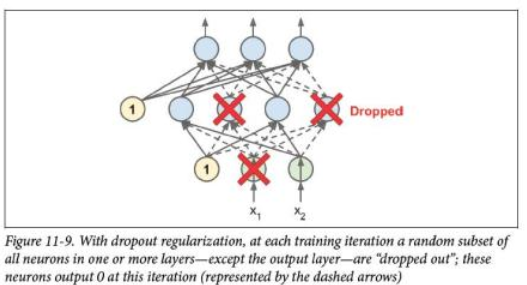
10. Building Machine Learning Pipelines: Automating Model Life Cycles with TensorFlow
🚨 Ideal for: intermediate Python developers
💥 Major topics: machine learning pipeline, analyze models
With Building Machine Learning Pipelines, you’ll explore machine learning techniques that maintain privacy.
➡️ Building Machine Learning Pipelines is one of the best TensorFlow books for automating machine learning pipelines using TensorFlow.
In addition, you’ll learn how to reduce deployment time from days to minutes using various techniques.
Then you’ll learn how to use tools like Apache Beam, Apache Airflow and Kubeflow.
After that, you’ll learn how to analyze models.
11. Python Machine Learning for Beginners
🚨 Ideal for: Python developers new to machine learning
💥 Major topics: data visualization, machine learning, statistical models
Python Machine Learning for Beginners is similar to Python Machine Learning, but isn’t quite as advanced.
In fact, it starts you off with a crash course in Python.
➡️ Python Machine Learning for Beginners is one of the best TensorFlow books for beginners in Python machine learning.
In addition to learning TensorFlow, you’ll also learn about useful data visualization tools like:
✅ NumPy
✅ Pandas
✅ Seaborn
After that, you’ll learn about data analysis and data visualization.
In the second half of the book, you’ll spend time on machine learning and statistical models for data science.
Each chapter presents the theoretical frameworks for different data science and machine learning techniques.
And from there, you’ll find practical examples and illustrations.
You’ll also gain instant access to online references, PDFs and exercises on the publisher’s website.
Best TensorFlow Books: Conclusion
Now let’s recap the ways we looked at to learn TensorFlow.
Today we looked at the best TensorFlow books of this year:
🔥 Best Overall 🔥
Deep Learning with TensorFlow 2 and Keras
💥 Best for Newbies 💥
Machine Learning with TensorFlow
💸 Best Value 💸
Machine Learning Using TensorFlow Cookbook
So whether you’re looking for quality, value, or newbie-friendliness, we think there are TensorFlow books for every developer.
TensorFlow developers are also reading:
- Best Machine Learning Courses for Beginners [Bonus: Intermediate and Advanced Machine Learning Courses]
- 6 Best Machine Learning Courses and Specializations [Includes Andrew Ng Stanford Course!]
- Is Grokking the Machine Learning Interview by Educative Worth It? [Machine Learning Interview Preparation]
- 9 Best Data Science Courses for Beginners [+4 Data Science Learning Paths]
- 18 Best Python Courses for Beginners [Including Python Learning Paths]
What are the best TensorFlow books?
We picked the best TensorFlow books based on the following criteria. For best overall, we think Deep Learning with TensorFlow 2 and Keras is the way to go. For newbies, we think Machine Learning with TensorFlow is the best book. And for value, we think Machine Learning Using TensorFlow Cookbook takes the win. You can learn more about these and other TensorFlow books in today’s article.
What is TensorFlow?
TensorFlow is Google’s free and open-source machine learning library. It’s used for large-scale machine learning. In addition, it simplifies computations by visualizing them as graphs. It has plenty of real-world uses such as seeking out new planets. You’ll find that TensorFlow aides in classification, discovering, prediction, creation and beyond. You can learn more about TensorFlow in today’s post where we look at TensorFlow books and Courses.
Is the book Deep Learning with TensorFlow 2 and Keras worth it?
Deep Learning with TensorFlow 2 and Keras by Antonio Gulli, et al. is one of the best TensorFlow books for learning regression, CNNs, GANs, recurrent neural networks (RNNs) and natrual language processing (NLP). Unlike some other similar books, it introduces TensorFlow and Keras right out of the gate, and you’ll use them throughout the book while you learn key deep learning and machine learning techniques. You’ll also find extensive code examples to reinforce concepts. Then you’ll examine the most popular approach to machine learning which is regression analysis. Plus you’ll have some fun challenges while applying deep learning to natural human language and producing responses. Eventually, you’ll learn how to write deep learning applications in this powerful, scalable machine learning stack. In addition, you’ll see how TensorFlow 2 provides full integration with Keras. Finally, you’ll learn how to train your models on the cloud and use TensorFlow in real environments. You can learn more about this and other TensorFlow books in today’s post.
Where can I learn TensorFlow?
You can learn TensorFlow in a variety of places including books and courses. In today’s post, we’re looking at 11 of the best TensorFlow books we could find. We also highlight a few TensorFlow courses that can help get you started learning TensorFlow. So be sure to check out today’s article to discover where you can learn TensorFlow.
![11 best tensorflow books this year [learn tensorflow asap]](https://realtoughcandy.com/wp-content/uploads/2021/04/newest-cover-best-tensorflow-books-1024x576.jpg)
